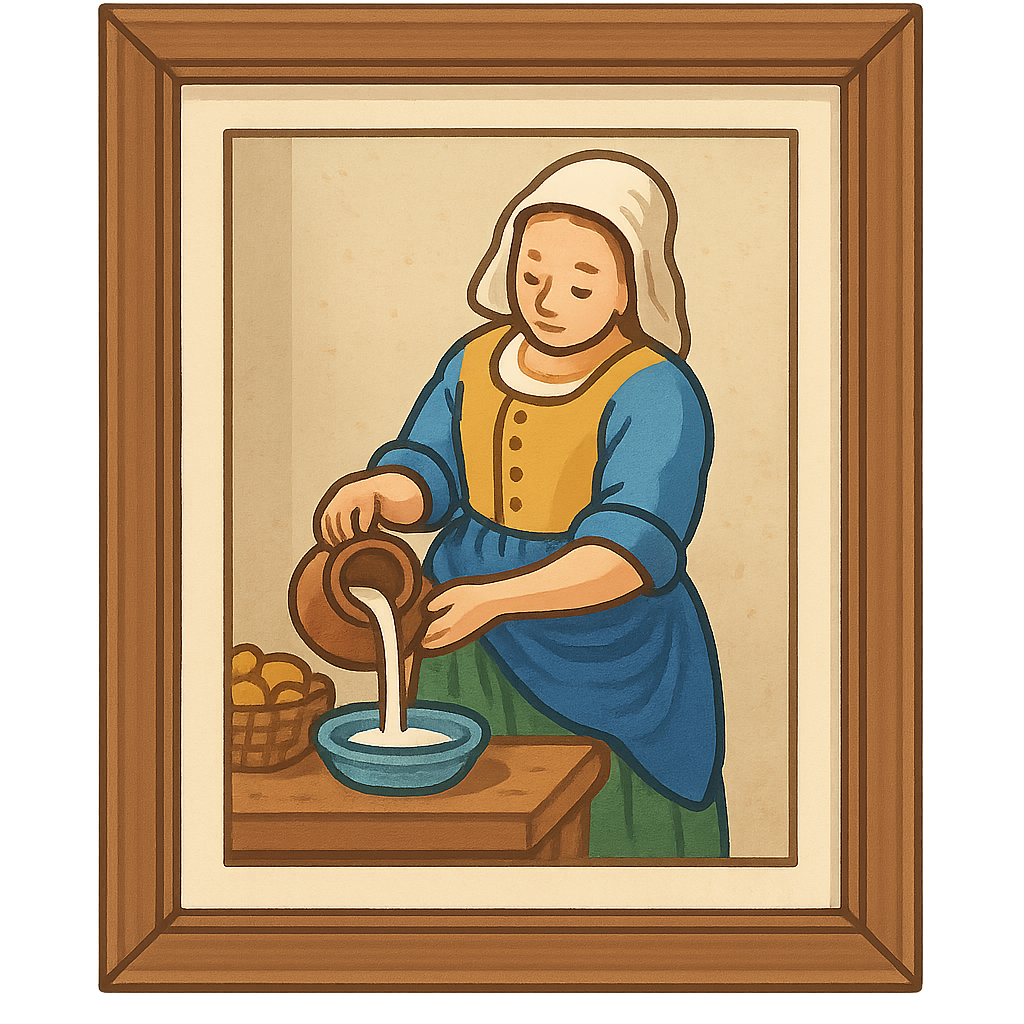The Milkmaid's Story
I am a quiet moment, captured in a sunbeam. Can you see me. I am the feeling of warm light pouring through a tall window, landing gently on a plain wall. I am the deep silence of a kitchen, broken only by the soft glug-glug of thick, creamy milk being poured from a heavy clay jug into a bowl. In my world, time stands perfectly still. A woman in a bright yellow shirt and a crisp blue apron is completely focused on her task, her face calm and thoughtful. On the table beside her, a basket of bread waits, its crust so real you can almost feel its crunch. My colors are simple and strong: the sunny yellow of her shirt, the deep blue of her apron, the creamy white of the milk and the wall. I am a painting, yes, but I am also a feeling. I am the peace you find in doing a simple job with great care. Step into my cozy kitchen. Do you feel the warmth. Can you smell the fresh bread. Who do you think I am.
I am The Milkmaid. My creator was a thoughtful, patient man named Johannes Vermeer. He was a master painter who lived in a lovely Dutch town called Delft, famous for its blue and white pottery. Around the year 1658, he looked into a simple kitchen and saw something truly magical. He didn’t want to paint epic battles or fancy kings and queens; he believed that the most beautiful stories were found in the quiet, everyday lives of ordinary people. He picked up his brushes and decided to show the world the importance of this moment. Can you imagine painting with such care that you use tiny, bright dots of paint to show how light sparkles on a crust of bread. That’s what Vermeer did. He made the pottery jug look so smooth you want to touch it, and the stream of milk look so real you think you can hear it splashing. He saw dignity and beauty in this woman’s work, and he wanted everyone, for hundreds of years to come, to see it too.
For over 350 years, I have watched the world from my frame. I have hung on the walls of different homes and traveled across the sea. Today, my permanent home is in a grand building in Amsterdam called the Rijksmuseum. By the year 1808, I was already becoming very famous, and people would travel just to get a glimpse of my quiet kitchen. Visitors from all over the world still line up to see me. They stand before me and grow very still. They tell me I feel real, like a window looking directly into the past. They say I remind them to slow down and appreciate the small things. My painter, Johannes Vermeer, wanted to share a secret with the world: you don’t need a crown or a castle to be beautiful and important. Beauty is in the sunlight on the wall, the focus in someone's eyes, and the simple act of pouring milk. I hope that when you look at me, you remember to find the wonder that is hiding in your own everyday world.
Reading Comprehension Questions
Click to see answer
